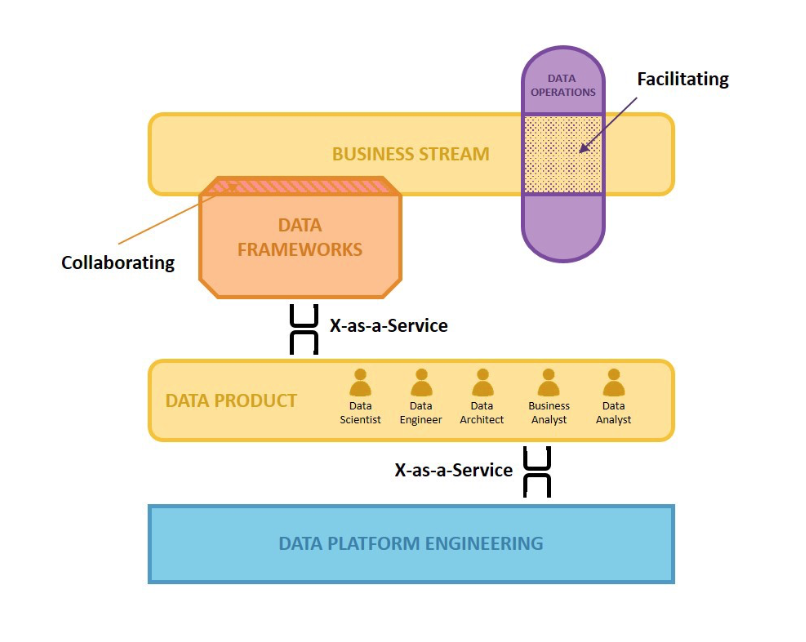Notes on Team Topologies Book

General notes
Overall this is a great book, and many other authors and sources recommend it as a must-read for any management role.
I will recommend it as well 🙂 This book gives a good structure on how to think and design your teams.
But… it could be like 3x times shorter than it is right now. A big part of the text is just a repetition of what was already said, just from a different angle.
Some of my notes
Book methodology relies heavily on Convey’s Law and respective Reverse Convey Maneuver (when we design team structures to match the desired architecture)
Any organization that designs a system (defined broadly) will produce a design whose structure is a copy of the organization’s communication structure.
— Melvin E. Conway
Management principles
- Teams are fundamental building blocks for organisational design
- Teams should be five to nine people
- Teams should “own” their software
- Each part of the system needs to be owned by exactly one team (no shared ownership)
- Move authority to leaders with the best information to take action (move away from Command and Control structures)
- Organization Design should go hand in hand with System Design - they are connected and influence each other
- Manage cognitive load on teams (clear teams responsibilities and boundaries)
- Organization should not allow any subsystem to grow beyond the cognitive load of its team (match software boundaries to team cognitive load)
- Teams should be long-lived and autonomous
- Work should go to the Team not the other way around
- Software architecture is needed before we organize teams, otherwise, team structure will dictate the architecture
- Use proven software architecture good practices to achieve fast flow within teams:
- Loose coupling
- High cohesion
- Version compatibility
- Cross-team testing
- Fast flow requires restricting communication between teams (not in every case - where we need to explore something and find a new knowledge communication is encouraged, but where we need execution - communications should be kept to a minimum)
- Architects need to be a manager too (or managers will be your architects)
- If two teams that should not be communicating heavily according to bad designs in fact ARE communicating heavily - something is not right (API issues, platform issues, etc.)
- Some people just can’t work in teams - remove them
- Reward whole teams, not individuals
- Minimize team distractions (limit meetings, reduce emails, etc.)
- Increase Developer Experience for other teams who are using your code or API
- Define Team APIs (code, documentation, UX, etc.)
- Use business domain bounded contexts to define software (and team) boundaries
- Reduce handover between teams
- Delivery teams should be cross-functional, with all the skills to design, develop, test, deploy and operate the system
- Feature teams require high engineering maturity (automating tests, minimal dependencies, CI/CD, etc.)
- Change team topologies and team interactions according to your situation (they should not be static)
Team Types according to Team Topologies authors

Stream aligned teams
- primary team form - most teams should be of this type, all other types exist to support it
- aligned to a single valuable stream of work
- able to build and deliver customer value quickly, safely, without requiring hand-offs to other teams
- optimized for flow
- use loose coupling, minimize dependencies and coordination between Stream-aligned teams
- use Complicated-subsystem teams and Platform teams to reduce cognitive load
Enabling team
- collaborative nature
- “Technical Consulting Teams”
- provides guidance, not execution
- End goal: increase the autonomy of stream-aligned teams by growing their capabilities. Stream-aligned team should not have a need for enabling’s team help after a few weeks or months
Complicated-subsystem team
- build and maintain part of the system requiring heavily specialist knowledge
Platform team
- enable stream-aligned teams to deliver work with autonomy
- provides internal services to reduce the cognitive load of stream-aligned teams
- strong focus on usability and reliability for their services
- aim for the thinnest viable platform (TVP) and avoid letting the platform dominate the discourse
- should focus on Developer Experience
Team Interaction Modes according to Team Topologies authors

X-as-a-Service
- consuming or providing something with minimal collaboration
- clear responsibilities, predictable delivery (“just works”)
- focus on Developer Experience
Collaboration
- teams working closely together
- drives innovation, use when discovery is needed
- high communication costs
- architecture will be blended due to Conway’s Law
- should be used as a temporary mode, establish interfaces and move to X-as-a-Service when possible
Facilitating
- helping another team to clear impediments
- reduce gaps in capabilities
Teams always should ask: “What kind of interactions should we have with another team?”
Team Topologies Core Ideas

